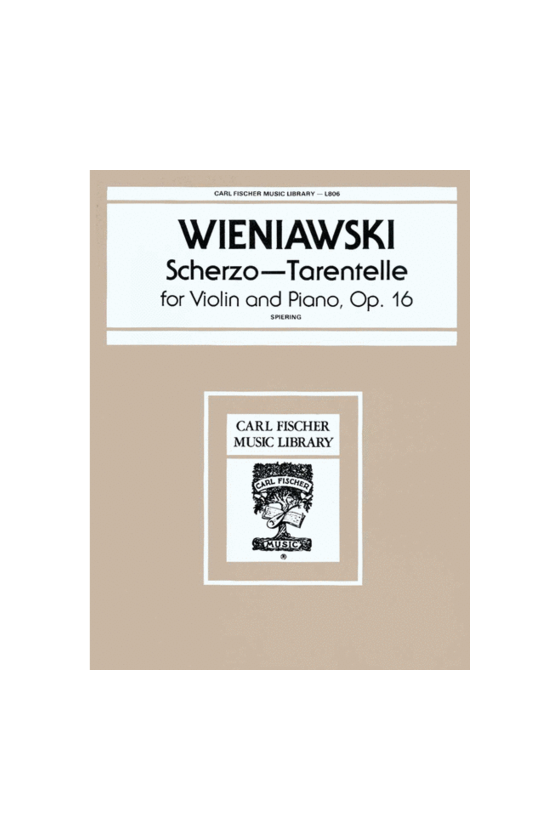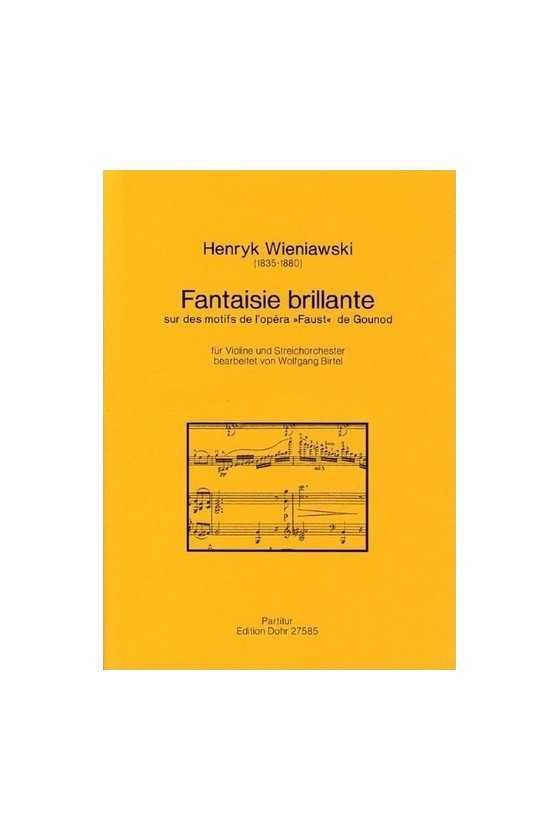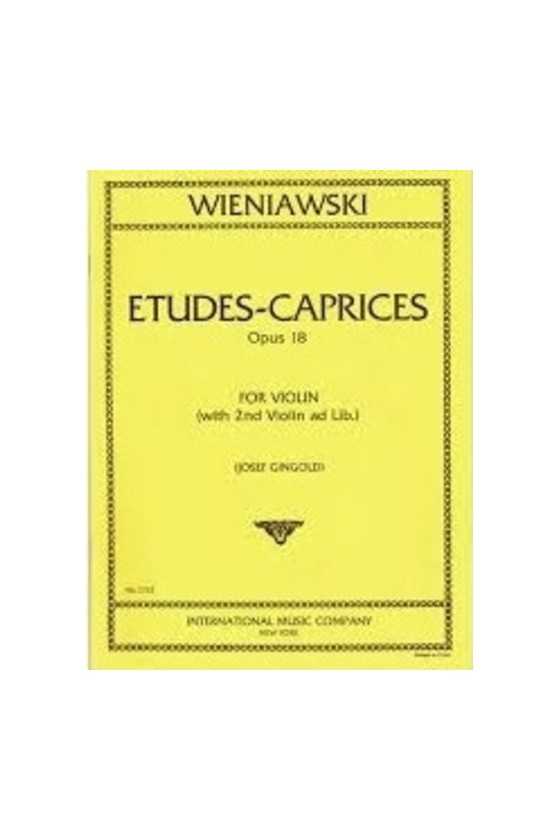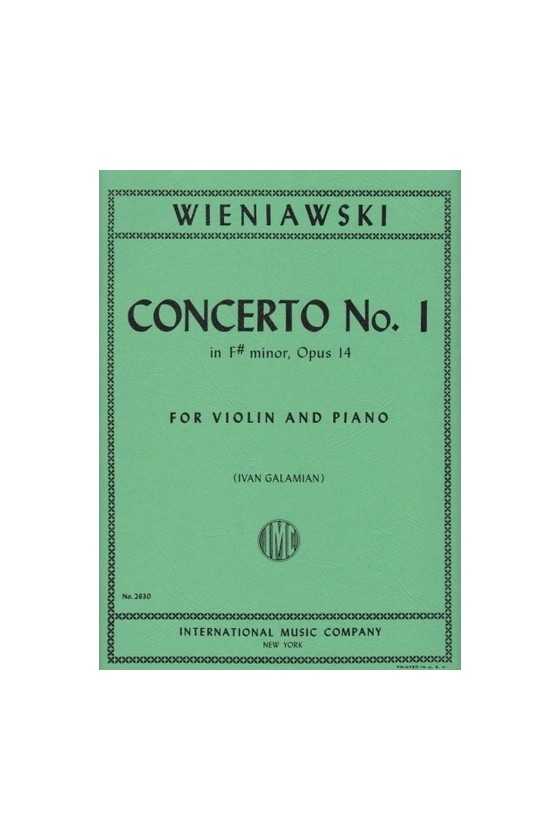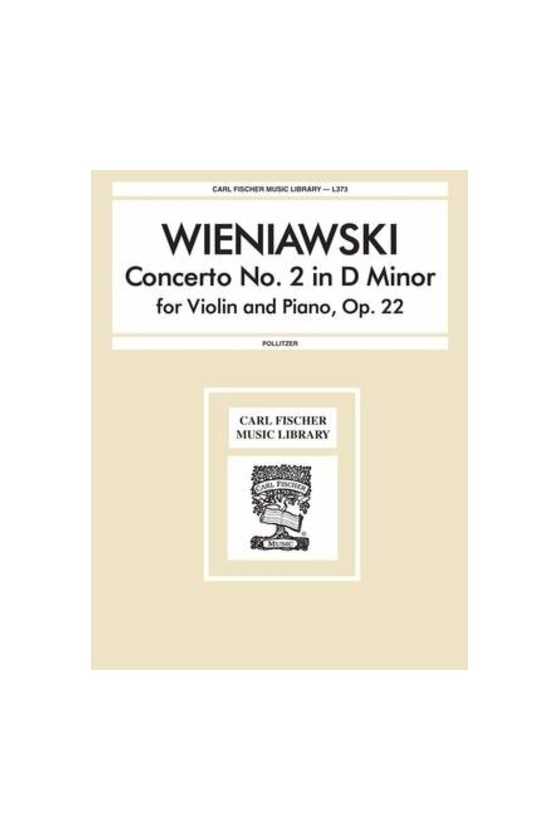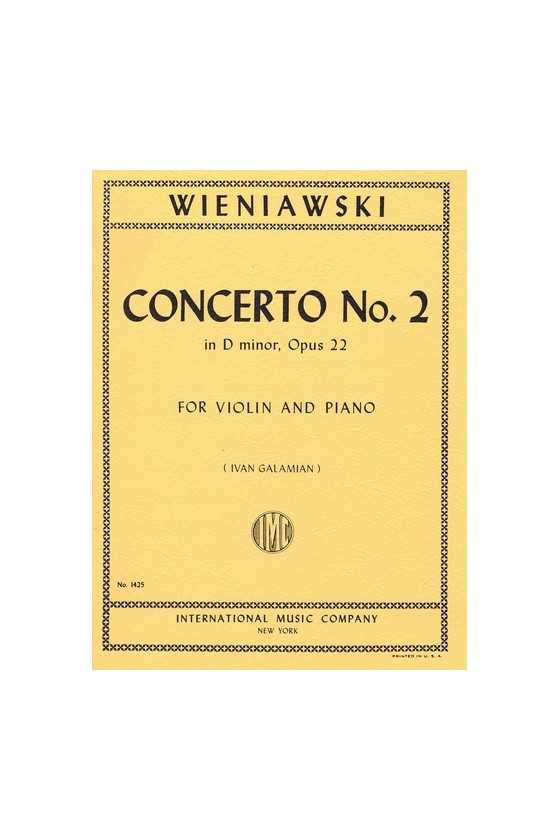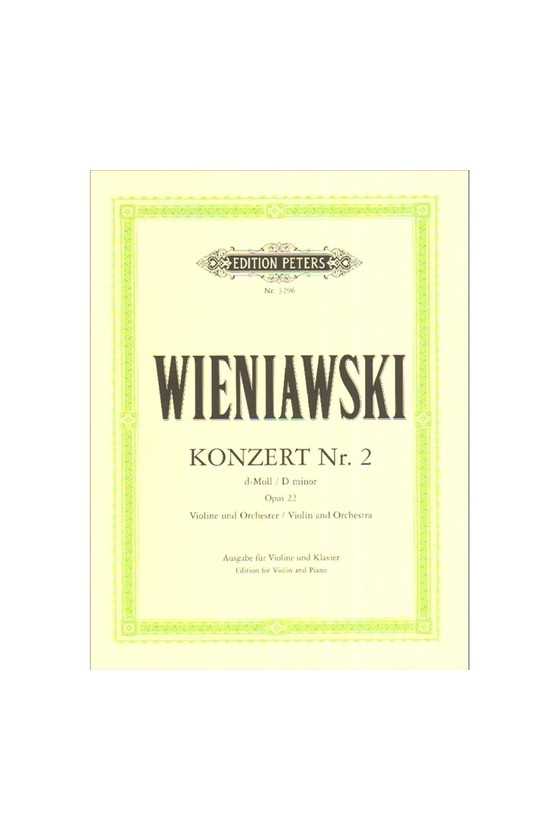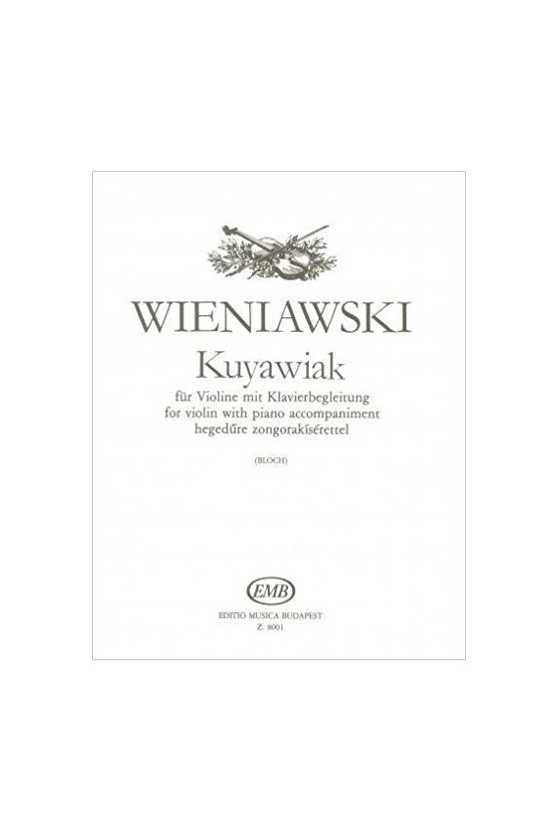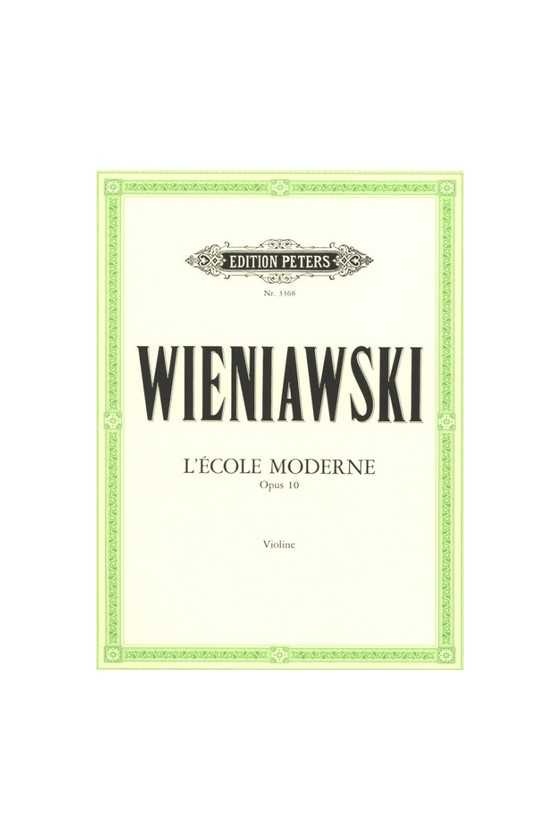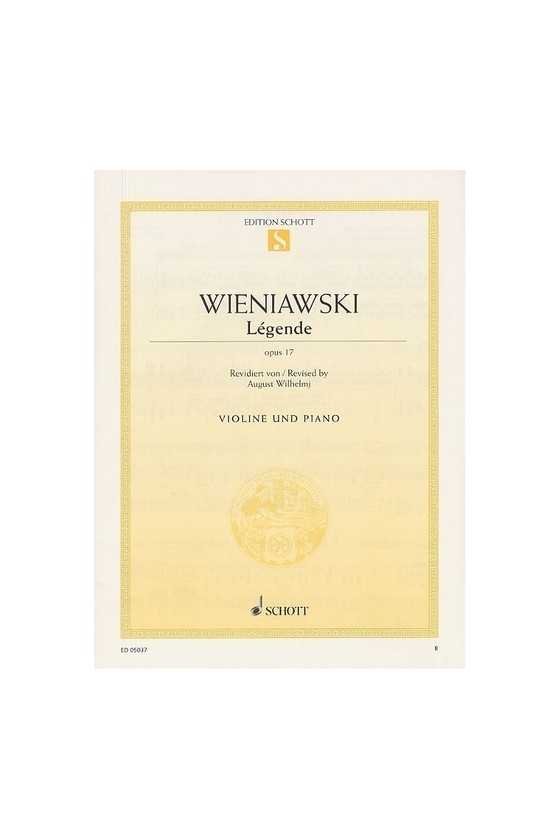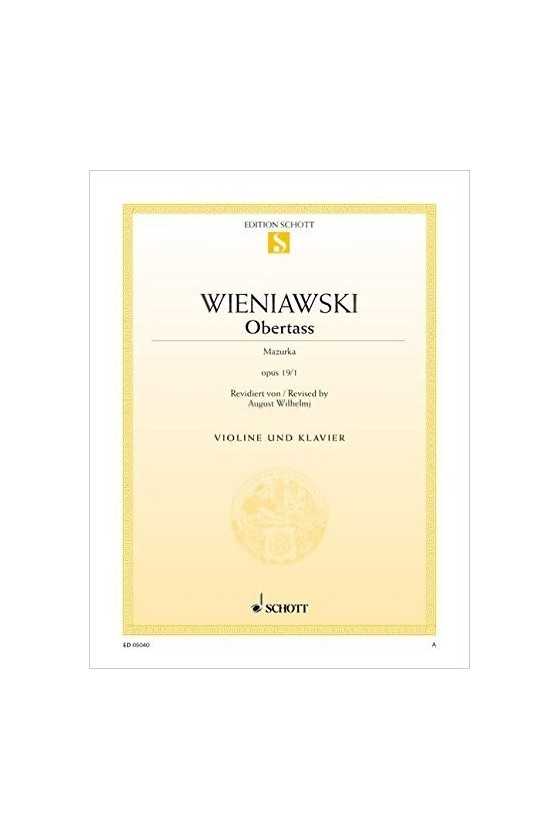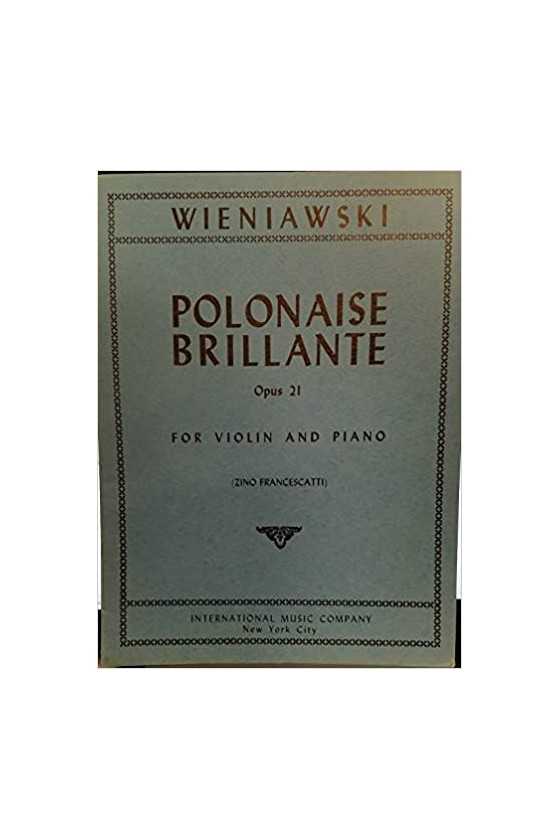Scherzo - Tarentelle Op 16 Violin/Piano By Wieniawski (Fisher)
Scherzo - Tarentelle Op 16 Violin/Piano by Henri Wieniawski (Fisher)
Henryk Wieniawski (10 July 1835 – 31 March 1880) was a brilliant violinist, composer, and pedagogue from Poland who is widely considered one of the finest violinists of all time. Józef Wieniawski, his younger brother, and Adam Tadeusz Wieniawski, his nephew, were outstanding musicians. Henryk's gift for the violin was recognized early on, and he was accepted into the Paris Conservatoire, where he was trained by Lambert Massart in 1843, even though he was not French and was only eight years old. He studied at the Conservatoire from 1843 to 1846 and then returned in 1849 for another year. After graduation, he went on to tour extensively and give several recitals, often with his brother Józef on piano. His first opus, a Grand Caprice Fantastique, was released in 1847, marking the beginning of a catalog of 24 opus numbers. When his parents objected to his engagement to Isabella Hampton, Wieniawski composed Légende, Op. 17; this work persuaded her parents to alter their minds, and the couple married in 1860.
At Anton Rubinstein's invitation, Wieniawski moved to St. Petersburg, where he taught many violin pupils and led the Russian Musical Society's orchestra and a string quartet from 1860 to 1872. Wieniawski toured the United States with Rubinstein from 1872 to 1874. In 1875, Wieniawski took over as violin professor at the Conservatoire Royal de Bruxelles, replacing Henri Vieuxtemps. Henryk Wieniawski was a gifted musician who composed several noteworthy violin pieces, including two technically challenging violin concertos. The second (in D minor, 1862) is more frequently performed than the first (in F-sharp minor, 1853). His L'École moderne: 10 Études-Caprices is a well-known piece for aspiring violinists, as it is the oldest collection of etudes still performed that are more challenging than Paganini's Caprices. Polonaise Brillante, Op. 4, Scherzo-Tarantelle, Op. 16, and Légende, Op. 17 are among his most popular compositions. He also composed several mazurkas for violin and piano (including the well-known Obertass in G major), employing left-hand pizzicato, harmonics, giant leaps, and double stops. Wieniawski received numerous posthumous awards. In 1952 and 1957, his portrait was featured on a Polish postage stamp. In 1979, a 100 zloty coin with his likeness was produced. The "Russian bow hold" is also known as the "Wieniawski bow hold" since Wieniawski taught his students an extremely tight bowing technique (similar to the Russian bow hold) that allowed him to play what he dubbed a "devil's staccato" with ease. Students' approach was disciplined with this "devil's staccato." In 1935, the first violin competition named after Wieniawski was held in Warsaw. Ginette Neveu won first place, followed by David Oistrakh and Henri Temianka. Since 1952, the International Henryk Wieniawski Violin Competition has occurred every five years.
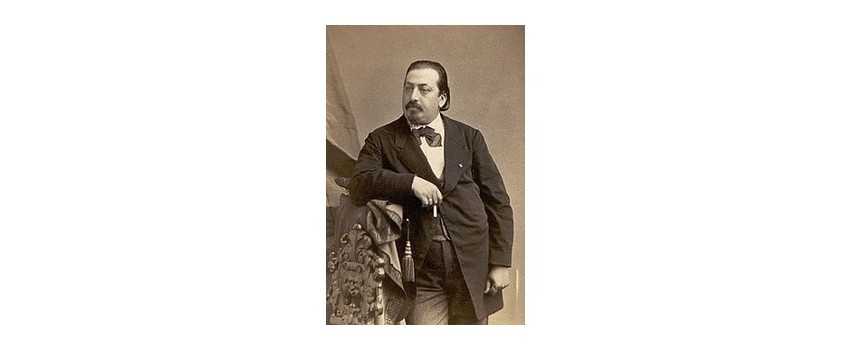
Scherzo - Tarentelle Op 16 Violin/Piano by Henri Wieniawski (Fisher)
Wieniawski, Concerto No. 1 in F# min for Violin (IMC)...
Wieniawski, Concerto No. 2 in D min Op. 22 for Violin (Fischer)...
Wieniawski, Concerto No. 2 in D min Op. 22 for Violin (IMC)...
Wieniawski Konzert Nr 2 in D min for violin Op 22 (Edition Peters)
Wieniawski, Kuyawiak for Violin (Editio Musica Budapest)
Wieniawski, L'ecole Moderne Op. 10 for Violin (Peters)...
Wieniawski, Obertass for Violin (Schott) 13...
Wieniawski, Polonaise Brillante Op. 21 for Violin (IMC)...
Boxed:
Sticky Header:
Sticky Add To Cart
Sticky Footer:
Font:

